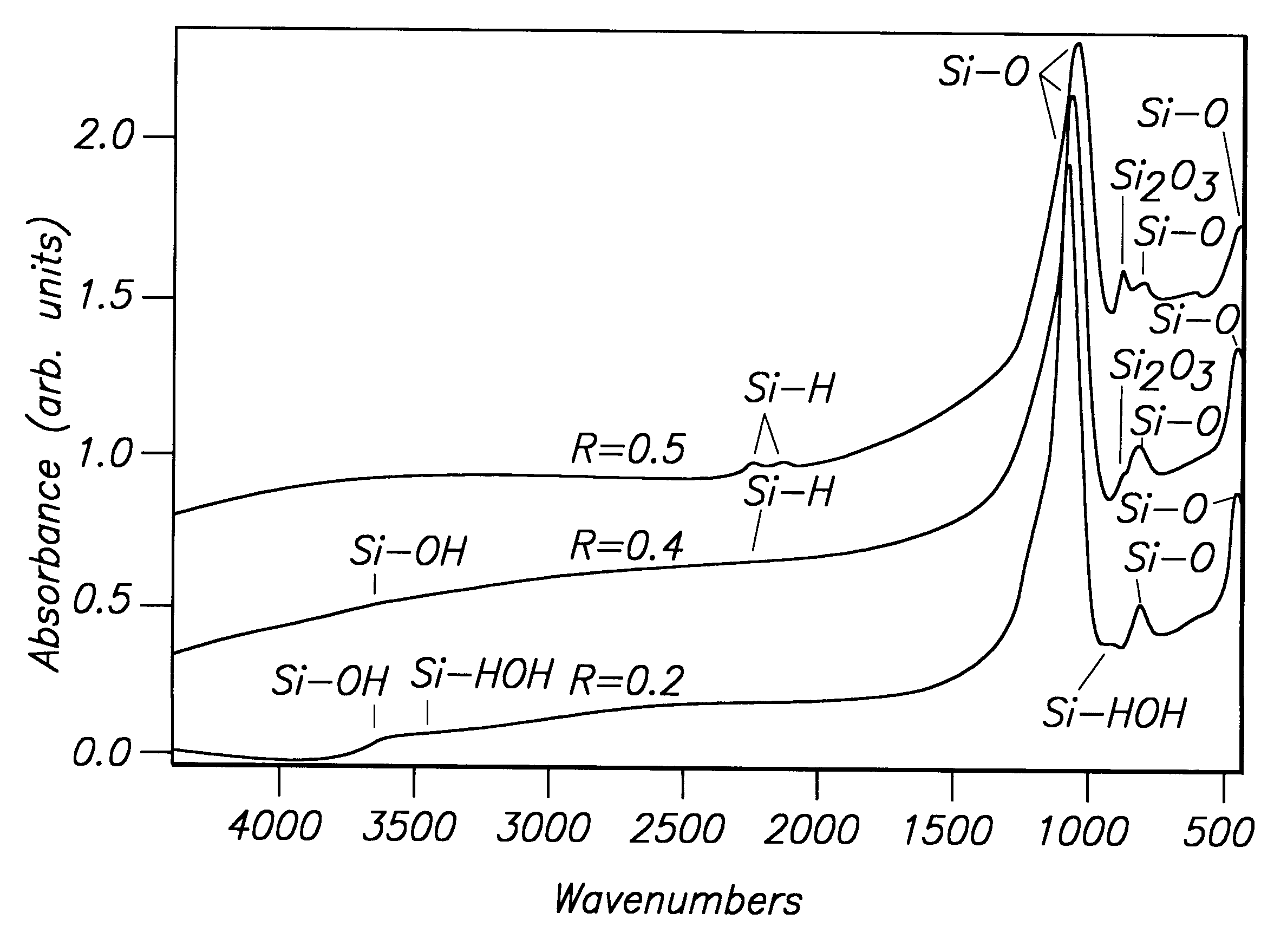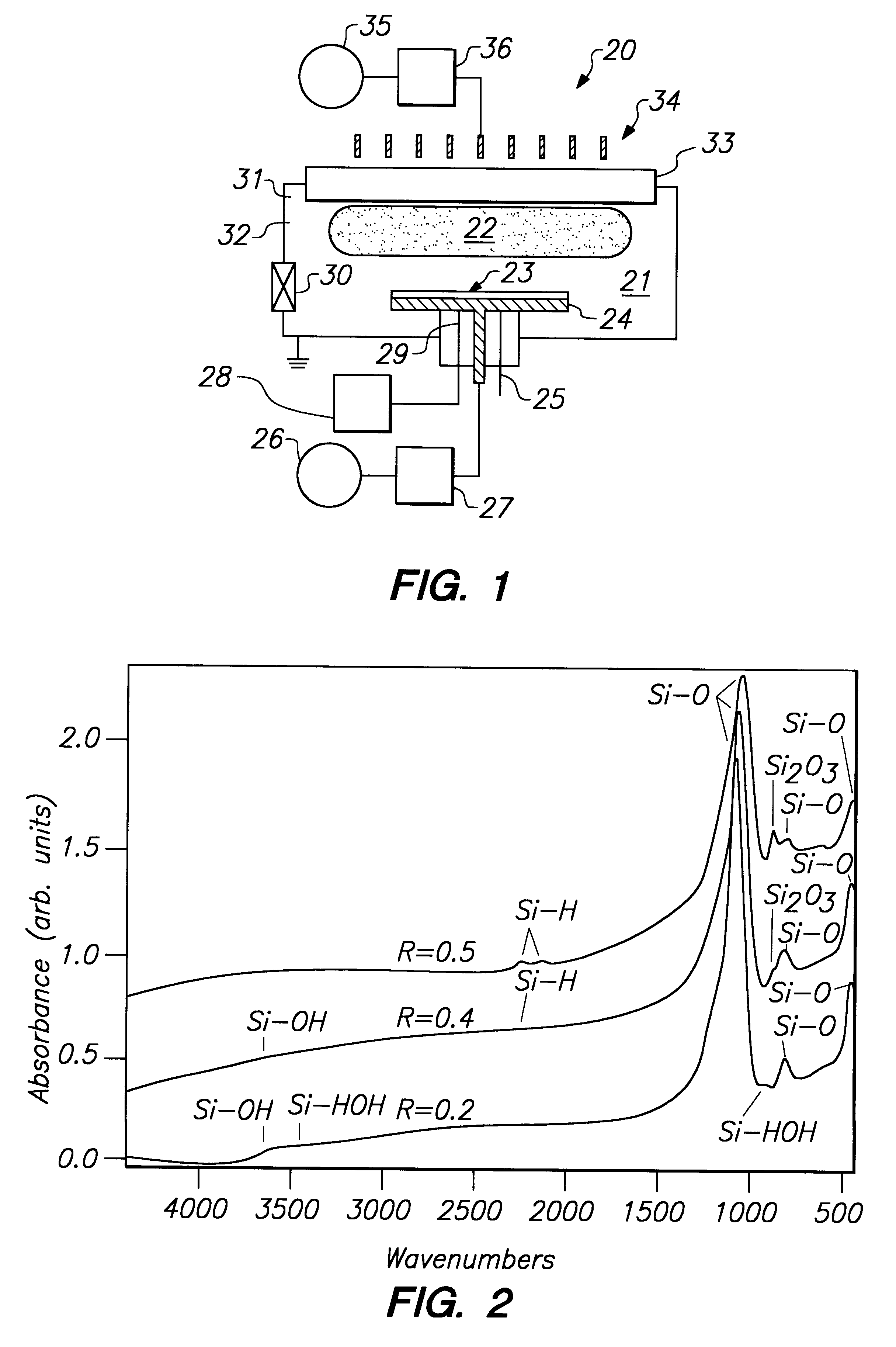Inductively coupled plasma CVD
a plasma cvd and inductive coupling technology, applied in the field of inductive coupling plasma cvd, can solve the problems of high cost, complex ecr and helicon sources which rely on magnetic fields, and unsuitable techniques for gap widths below 0.5 microns,
- Summary
- Abstract
- Description
- Claims
- Application Information
AI Technical Summary
Problems solved by technology
Method used
Image
Examples
example i
(Gap-filling process)
SiO.sub.2 IMD depositions were conducted in an ICP system similar to that of FIG. 1. Mechanically-clamped 150 mm wafers were employed. Two gas rings located at the bottom edge of window 33 were employed. One ring distributed the SiH.sub.4 and the other distributed the Ar and O.sub.2. System parameters are set forth in Table 1. The electrode temperature was maintained at 80.degree. C.
Effect of Oxygen to Silane Mass Flow Ratio (at constant total flow) on Film Properties
The film stoichiometry was determined by the chemical composition of the plasma, established primarily by the ratio R of the silane and oxygen mass flow rates: R=Q.sub.SiH4 / (Q.sub.SiH4 +Q.sub.O2) where Q is the gas mass flow rate. Note that the effective oxygen-silane ratio that the wafer sees also depended on other process parameters. The effect of R on the film properties is shown in Table 2.
The plasma chemistry for the deposition can be broadly classified into the following reactions:
R<0.5: SiH....
example ii
(GaM-fill and Capping Processes)
SiO.sub.2 IMD and capping depositions were conducted in an ICP system similar to that of FIG. 4. In this example 200 mm wafers were processed. The wafers were electrostatically clamped to a thermally controlled chuck. The lower electrode was powered by a 13.56 MHz generator. A 2000 l / sec pump to improve the pumping speed at high flows was also implemented into the ICP / CVD system. ICP power ranging from 1000 to 2500 watts was used. High bias power was used for the gap fill process and ranged from 500 to 2500 watts.
Typical process parameters are shown in Table 5 for the gapfill, cap, and sacrificial cap layers and the corresponding film characteristics. The table also lists the preferred ranges for the process parameters.
In these depositions (0.5 .mu.m gaps), argon was included in the process gas. However, the addition of argon is not always necessary as indicated in the preferred ranges. In the deposition of the cap layer, the initial deposition can em...
PUM
| Property | Measurement | Unit |
|---|---|---|
| Pressure | aaaaa | aaaaa |
| Pressure | aaaaa | aaaaa |
| Angle | aaaaa | aaaaa |
Abstract
Description
Claims
Application Information
 Login to View More
Login to View More - R&D
- Intellectual Property
- Life Sciences
- Materials
- Tech Scout
- Unparalleled Data Quality
- Higher Quality Content
- 60% Fewer Hallucinations
Browse by: Latest US Patents, China's latest patents, Technical Efficacy Thesaurus, Application Domain, Technology Topic, Popular Technical Reports.
© 2025 PatSnap. All rights reserved.Legal|Privacy policy|Modern Slavery Act Transparency Statement|Sitemap|About US| Contact US: help@patsnap.com


